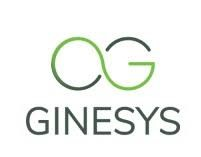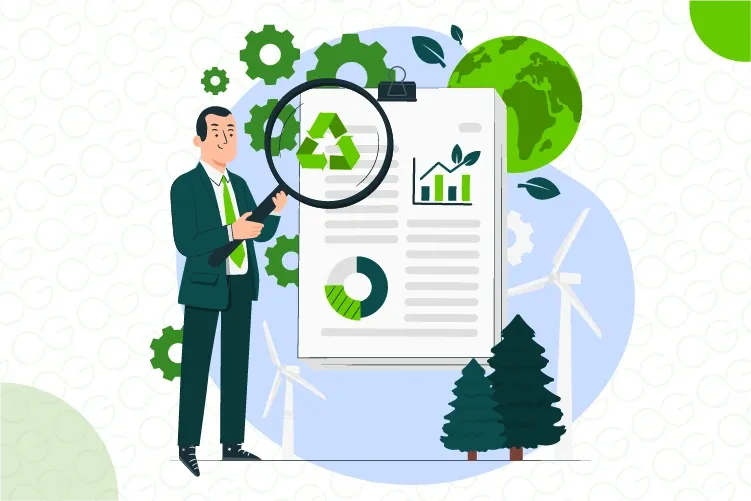Important Factors for Replenishment beyond the Min-Max
In the rapidly evolving landscape of Indian retail, where customer preferences shift rapidly and competition is relentless, effective inventory replenishment is not just a necessity—it’s a strategic advantage. Traditional inventory management models such as the Min-Max approach, though foundational, are increasingly proving inadequate in dealing with the dynamic nature of modern retail operations.
While Min-Max inventory planning offers a basic mechanism to trigger reordering based on predefined minimum and maximum stock levels, it lacks the flexibility, responsiveness, and intelligence required for today's fast-paced retail environment. This shortfall is particularly evident in scenarios involving seasonality, promotions, or product-specific demand surges. More importantly, the Min-Max model tends to promote bulk ordering, leading to excessive inventory that inflates costs and impairs operational efficiency.
Let’s delve deeper into why this approach falls short and how advanced, intelligent replenishment systems—like those provided by —offer a superior, holistic alternative tailored for the complexities of the Indian retail market.

Struggling with excess inventory or stockouts? Switch to intelligent, real-time replenishment with Ginesys.
The Problem with the Min-Max Model
At its core, the Min-Max model determines whether the available inventory has dropped below a predefined minimum threshold. If it has, the system automatically recommends replenishment up to the maximum threshold. While this sounds logical in theory, the practical outcomes often result in operational inefficiencies and elevated costs.
1. Excessive Inventory Holding
One of the biggest drawbacks of the Min-Max method is that it often encourages large and infrequent purchases. These bulk orders, while seemingly cost-efficient on the surface, result in overstocking. The retailer ends up with an excess inventory that ties up capital, occupies storage space, and increases risks of obsolescence or markdowns—especially for perishable or trend-sensitive goods.
2. Fear of Stockouts Leads to Over-Ordering
Retailers often increase their Max levels to avoid stockouts during high-demand periods. However, this precautionary approach leads to the accumulation of unsold inventory post-season. Especially in a diverse and festive-driven market like India, unsold inventory from one season may not be relevant in the next, resulting in dead stock and losses.
3. Outdated Forecasting Methods
Min-Max systems typically rely on historical sales data from ERP systems to forecast inventory needs. However, these systems don’t account for market trends, seasonal influences, promotional campaigns, or evolving consumer behavior. As a result, replenishment decisions made using Min-Max are often misaligned with real-time market demands.

Don’t let outdated systems hold you back. Get real-time insights and dynamic forecasting with Ginesys ERP.
The Modern Approach: Intelligent Replenishment Beyond Min-Max
Recognizing the limitations of traditional models, intuitive, and data-driven replenishment systems designed specifically for Indian retailers are becoming popular. These solutions don’t just react to historical data; they anticipate future needs using advanced analytics and business intelligence.
Let’s explore how to enhance replenishment planning beyond Min-Max limitations:
Seasonal Demand Forecasting
India’s retail market is heavily influenced by seasonal spikes—Diwali, Durga Puja, Eid, Christmas, and the wedding season, to name a few. understands the importance of anticipating these seasonal shifts and helps retailers plan accordingly.
By leveraging AI-powered trend analysis and demand forecasting tools, enables retailers to predict which products will be in demand during upcoming festive seasons. For example, a store may experience a surge in ethnic wear during Navratri and formal attire during wedding season. ensures that the right products are stocked at the right time—reducing both overstocking and missed sales opportunities.
Dynamic Replenishment Based on Product Lifecycle
Not all products have the same shelf life or demand curve. While some are evergreen, others may be trend-driven or limited-time offers. helps retailers identify where each SKU lies in its product lifecycle and adjusts replenishment strategies accordingly.
For instance, fashion apparel that’s part of a short-lived collection will not be replenished with the same aggressiveness as a bestselling white shirt. Inventory replenishment systems distinguish between these categories, ensuring that replenishment is aligned with both customer demand and inventory turnover rate.
Real-Time Inventory Visibility Across Channels
Retailers today operate in an omnichannel environment—physical stores, e-commerce platforms, social commerce, and marketplaces. This makes centralized and real-time inventory visibility a prerequisite for efficient replenishment.
Stock replenishment systems that are intelligent, also provide retailers with a unified view of inventory across all channels. They ensure that stock movement, returns, and transfers are tracked in real time, enabling smarter restocking decisions. This not only prevents stockouts but also eliminates redundant reorders that often result from siloed inventory systems.
Lead Time Optimization
Lead time—the delay between placing an order andṣ receiving stock—plays a critical role in replenishment accuracy. Longer lead times require retailers to carry more safety stock, which inflates inventory costs.
Smart replenishment helps retailers factor in vendor-specific lead times while calculating reorder points. Additionally, it tracks historical vendor performance and suggests alternate suppliers in case of delays. By minimizing lead time and improving delivery predictability, helps retailers strike a better balance between inventory levels and service availability.

Replenishment Based on Minimum Order Quantity and Sales Velocity
Traditional systems force retailers to order in preset lots, often based on vendor requirements. This can lead to over-ordering of slow-moving items and under-ordering of fast-sellers. New-age inventory refilling brings flexibility by integrating sales velocity, customer footfall, and store-specific demand into replenishment calculations.
It evaluates multiple variables such as:
- Store-wise sales patterns
- Product velocity (units sold per day)
- Promotional impacts
- Supply chain delays
- Growth trends (YOY / MOM)
This multi-factorial analysis ensures that the replenishment quantity is optimized for actual need, not just for convenience or fear.
Role of Business Intelligence in Performance and Trend Analysis
Business Intelligence allows retailers to dig deep into past replenishment cycles and analyze what worked and what didn’t. These insights are critical in refining future inventory decisions.
Reports include:
- Reorder accuracy reports
- Overstock and understock analysis
- Store-wise demand variation
- Vendor reliability and response time
- Festive/seasonal sell-through rates
With this historical context, retailers can fine-tune their planning models to avoid repeating past mistakes and enhance profitability.
Replenishment Recommendations with Business Growth in Mind
As retailers grow, so do their complexities—new stores, expanding SKUs, varied customer bases. Systems that scale with the business, adapting replenishment recommendations to the retailer’s stage of growth.
Instead of using flat reorder formulas, smart reordering considers the business trajectory. A fast-growing apparel chain in Tier 2 cities will receive different recommendations than a mature, urban electronics retailer. This growth-sensitive intelligence ensures that replenishment stays aligned with broader business objectives.

Integrated Promotions and Pricing Strategies
Discounts, combo offers, and promotional pricing can significantly impact sales volume. Modern retail integrates replenishment with planned promotions so that inventory is aligned with the expected spike in demand.
It evaluates:
- Expected lift in demand from discounting
- Cross-product dependencies (e.g., more shirts = more ties)
- Historical promo performance
- Shelf-life of promotional SKUs
Retailers can thus launch aggressive campaigns without risking stockouts or overstocking non-performing items.
Sustainability and Stock Optimization
Modern consumers care about sustainability, and retailers are under pressure to reduce waste. Overstocking leads to markdowns, expired goods, and environmental impact.
Smart replenishment software supports responsible retailing by ensuring that replenishment is tight, accurate, and waste-reducing. Retailers get the tools to manage inventory better, reduce carbon footprint, and align with ESG goals.
Unified Reporting and Automation
Business Intelligence offers real-time dashboards and automated alerts for low stock, delayed replenishments, or unexpected surges. Store managers, warehouse operators, and procurement teams can act swiftly, improving collaboration and responsiveness.
Built-in BI (business intelligence) ensures that every stakeholder—from merchandisers to CFOs—has access to meaningful, actionable insights. No more guesswork, just data-backed decisions.

Discover smarter, scalable replenishment strategies built for modern Indian retail.
Moving Beyond the Basics with Ginesys
The retail industry in India is transforming at a breakneck pace. Consumer behavior is unpredictable, technology adoption is surging, and margins are razor-thin. In such an environment, replenishment can no longer rely on basic Min-Max models that offer limited flexibility and foresight.
Modern retail demands intelligent systems—ones that factor in real-time demand, market trends, festive spikes, and product life cycles. Ginesys provides exactly that: a next-generation replenishment engine that goes beyond thresholds and triggers. It empowers retailers to make smarter, leaner, and more profitable inventory decisions—every single day.
By choosing Ginesys, retailers move from reactive stock management to proactive inventory planning—delivering the right products, at the right time, in the right quantities. The result? Better sales, lower costs, happier customers, and a retail business that's built for the future. Schedule a demo with Ginesys today to see the real results.

